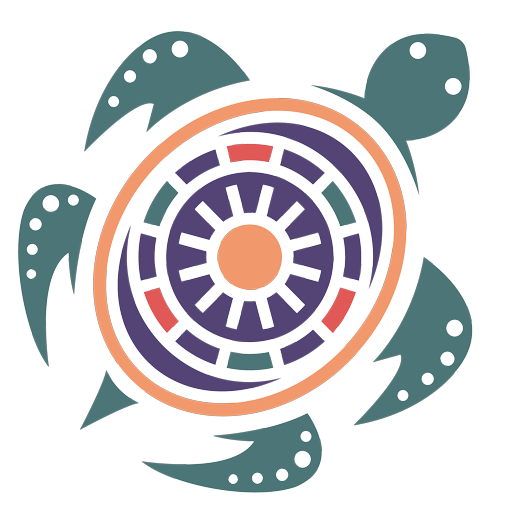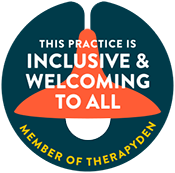Narcissistic Red Flags and Glossary of Terms

By Brenda Stephens, LPCC
ACoNs
This acronym stands for “Adult Children of Narcissists.” It is commonly used by narcissistic abuse survivors and those who help them heal.
Cognitive Dissonance
The narcissist’s externalized, manufactured identity is built on lies and denial, and she expects her family members to accept her version of the “truth.” What this means for the narcissist’s spouse and children is that they find themselves in the “opposite land,” where she tells them (usually through a range of manipulative tactics)that “reality” is different from or even the opposite of what they feel and perceive. The narcissist produces a cognitive dissonance in others, who experience a profoundly disorienting gap between what they perceive and what the narcissist says happened—black is white, good is bad, false is true. Particularly in young children, cognitive dissonance is highly traumatic, leading to self-doubt and disassociation.
C-PTSD
This stands for Complex Post-Traumatic Stress Disorder, a condition common in narcissistic abuse victims and people with NPD. C-PTSD includes a wide range of disabling symptoms, including some or all of the following disturbances:
● hypervigilance
● generalized fear, anxiety, and agitation
● over-reactivity
● insomnia
● nightmares and/or night terrors
● self-isolation
● difficulty trusting
● self-destructive behavior
● intrusive thoughts
Denial
A person in denial willfully believes or pretends that traumatic events or circumstances do not exist or did not happen. Often even when presented with evidence to the contrary, also known as Cognitive Dissonance.
Devaluation
Because of their emotionally primitive perfect-or-worthless thinking (stuck at the developmental level of a young child) and their insistence on unattainable perfection, narcissists in relationships (with partners, family members, or friends) nearly inevitably become disillusioned. Since they lack a moral compass (again, like the stunted children they are), they do not hesitate to express their disappointment in a range of devaluing hostile behaviors, including judgment, belittlement, and rage, if not outright abandonment.
Divide and Conquer
This is a primary strategy narcissists use to assert control. Particularly within their family, to create divisions among individuals. This weakens and isolates family members, making it easier for narcissists to manipulate and dominate. The narcissist sets up an environment of competition and terror in which individuals try to avoid the attack, often at one another’s expense. He favors some and scapegoats others. This breeds mistrust and resentment among siblings or between his spouse and children. Such dynamics can also play out in a work setting, where a boss uses the same tactics to control and manipulate his employees.
Enabler
Usually, a partner/spouse of the narcissist enablers “normalize” and even perpetuate the narcissist. The grandiose persona, extreme sense of entitlement, and arrogant attitude and behavior toward others are absorbing the abuse and acting as an apologist for it. Enablers always avoid conflict and attack while seeking rewards such as affection, praise, power, gifts, or money. Enablers may be under the delusion that they are the only ones who can truly understand the narcissist. Often, they sacrifice or scapegoat their children to appease the narcissist. This person can be just as harmful as the narcissist, especially for children.
Fauxpology
Because narcissists refuse accountability and believe they are always right, they rarely genuinely apologize. Instead, they may toss out a false apology or fauxpology. Meant to deflect, induce guilt, or antagonize. Examples: “I’m sorry you think I’m such a disappointment as a mother,” “I’m sorry you interpreted something so innocent as unfair,” “I’m sorry you are so sensitive,” “I’m sorry you can’t understand how others feel,” or “I’m sorry you are so angry.”
Flying Monkeys
Like the flying monkeys who served the Wicked Witch of the West in The Wizard of Oz, flying monkeys in the narcissistic family are enablers who help with the narcissist’s dirty work. Often to avoid being targeted themselves and to benefit from a certain level of bestowed privilege. The most manipulable types make the best flying monkeys. They may be children or other relatives.
Gaslighting
This is a form of psychological abuse in which narcissists systematically undermine other people’s mental states by leading them to question their perceptions of reality.
Narcissists use lies and false information to erode their victims’ belief in their judgment. Ultimately, their sanity. Standard gaslighting techniques come in the form of denying and projecting: After an abusive incident, narcissists refuse responsibility, blame the abused, or outright deny that the abuse took place. They may say things like, “You’re too sensitive,” “You’re crazy,” “That’s not what happened,” “Why can’t you let anything go,” or “You made me do it.” The term gaslighting comes from the 1944 Hollywood film Gaslight, a classic depiction of brainwashing.
Golden Child
This child is singled out for favoritism, such as special privileges, more attention, high regard, exemption from discipline, and certain chores and responsibilities. Such bias is typically at the direct expense of a disfavored, scapegoated child.
Gray Rock
Going “gray rock” is a boundary-setting and conflict-avoidance strategy that can effectively deal with narcissists.
It simply means making yourself dull and nonreactive, like a colorless, unmoving rock. In gray-rock mode, you engage minimally with the narcissist and their circus of enablers/flying monkeys. You do not show or share your thoughts or feelings. You do not react to antagonism and manipulation. In short, you make yourself of little interest to the narcissist.
Hoovering
Since narcissists are, by nature, pathologically self-centered, they ultimately make those around them unhappy, if not miserable. Eventually, it drives many people away.
If people pull away or try to go no contact, narcissists may attempt to hoover (as in vacuum suck) them back within their realm of control. They try to hoover through various means, from promising to reform their behavior to acting unusually solicitously to dangling carrots such as gifts or money. However, if they find replacement sources of supply, they may walk away from old ones.
Hypervigilance
To cope with a chaotic and often psychologically and physically abusive environment, people close to narcissists adapt by becoming hypervigilant to threats or attacks. They are always on guard, seeking to anticipate and potentially avoid being in the line of fire.
Hypervigilance is emotionally and physiologically debilitating because it drains the body’s natural defense system by constantly overloading it. Hypervigilance often leads to Complex post-traumatic stress Disorder (C-PTSD) and illness. Narcissists themselves are hypervigilant to anything that might trigger their narcissistic injury.
Idealization
Narcissists see the world and others in binary terms—good or bad, black or white. They tend to either idealize or devalue others.
Narcissistic parents often idealize one golden child and devalue or scapegoat others. Their romantic relationships are characterized by a pattern of idealization followed by devaluation and often discard. When they identify a potential mate, they initially see them as perfect. When the false promise of perfection breaks down, they cannot see their mate realistically as having a mix of excellent and flawed qualities. Instead, bitter and punishing disillusionment follows.
Lost Child
This child draws little positive or negative attention by staying under the radar (of both narcissistic and enabling parents) and making few demands.
Mascot
This child plays the cute or funny “jester” role, diffusing family tensions without making demands.
Narcissistic Injury
Individuals with Narcissistic Personality Disorder (see description below) typically suffer an acute and invalidating emotional injury during their early years. This interferes with the healthy development of a stable identity and sense of self-esteem.
A lack of attunement with caregivers because of loss, rejection, abuse, neglect, or overindulgence (or a messy mix of those things) and a possible genetic predisposition are thought to be at the root of narcissistic injury. This leads to foundational feelings of worthlessness. Examples: a child with a mother who dies during his birth and a father who blames him for her death. Or a child who is ignored by one parent and habitually praised by the other, regardless of her efforts or true successes.
Narcissistic Personality Disorder (NPD)
This is a Cluster B personality disorder characterized by the following impairments: overreliance on others for self-definition, overreliance on others for self-esteem regulation, lack of empathy, exploitation of others, grandiose delusions, exaggerated entitlement, excessive attention seeking, and excessive admiration seeking.
Narcissistic Rage
Narcissistic personalities often react with rage if their narcissist injury is triggered. They take even the smallest slight, which most people would easily brush off, as intense humiliation and rejection. When this happens, their fabricated “perfect” self and overblown feelings of entitlement are threatened, setting off a wild rage response. Narcissistic rage is terrifying, sometimes physically violent, and far beyond normal anger. It is emotionally and physically traumatizing for those on the receiving end, particularly children, who naturally blame themselves for adults’ reactions.
Narcissistic Supply
People with Narcissistic Personality Disorder depend emotionally on others to sustain their sense of identity and regulate their self-esteem. They get their narcissistic supply either by idealizing and emulating others or by devaluing and asserting their superiority over them. A potential supply source is anyone they can manipulate—a partner, child, friend, or colleague. Without suppliers, narcissists are empty husks. If a supply source pulls away, they may attempt to hoover them back and look for other sources.
Neglect
This is a passive form of abuse in which caregivers ignore the emotional, psychological, and physical needs of their dependent(s). It can range from insufficient food or shelter to failing to provide affection, supervision, or protection.
No Contact
People whom a narcissist has abused may choose to cut ties altogether with that person. Typically, people with no contact have had their boundaries violated in traumatic ways, eventually pushing them to shut down all communication with the narcissist. For adult children of narcissists, going no contact is typically a profoundly ambivalent and painful choice that feels like a matter of survival to break the cycle of hurt and attempt to heal. Going no contact, especially from a parent, is challenging to explain to people who don’t understand narcissism and its devastating effects, further isolating victims.
NPD
This is the acronym for Narcissistic Personality Disorder.
Object Constancy
People with Narcissistic Personality Disorder suffer from a lack of object constancy, or the ability to sustain in real-time an awareness of overall positive feelings and past positive experiences with people in their lives when they are disappointed or hurt by them in some way. When triggered, the narcissist’s continuity of perception collapses into present-moment reactive emotion. Suppose his child forgets to do a chore, for example. In that case, the narcissistic father may become enraged and punish her, seeing her behavior as spiteful or irresponsible even if she is usually conscientious.
Parentification
This is a role reversal whereby a parent inappropriately looks to a child, usually the oldest or most capable, to take on parental roles and responsibilities in the family. Narcissists often parent a child to meet their emotional, physical, and sexual needs (Enablers often rely on the child to be a confidant). Parentification is an extreme violation of children’s boundaries, burdening them with adult responsibilities. A parentified child may be expected to play the role of confidant, therapist, or surrogate spouse and perform adult duties, such as caring for younger siblings, cooking, cleaning, managing finances, or earning money for the family.
Projection
Projection is attributing one’s feelings, actions, or traits to someone else. Through prophecy, narcissists blame the victim and deny accountability. If they lie, you are the liar; if they are childish, you are immature; if they insult you, you are critical; if they demand reassurance, you are insecure. Projection is especially traumatic for children, who internalize the belief that they are like their abuser or are hurting the person abusing them. Narcissists also may project their ideal beliefs about themselves onto others, such as their golden child or someone they admire. Narcissists project both consciously and unconsciously.
Scapegoat
This child (or children) is singled out unfairly for disfavored treatment in the narcissistic family. Scapegoats are typically blamed for family problems, disciplined or punished disproportionately, burdened with excessive chores and responsibilities, and subjected to unmerited adverse treatment.
Smear Campaign
Narcissists use smear campaigns to discredit others within their family or social sphere. Narcissists may smear another person because that person sees through their mask, they are trying to conceal their abuse of that person preemptively, or they are taking revenge because the person offended or rejected them. Narcissists may conduct a smear campaign for lesser reasons, such as jealousy or resentment. Narcissists can be quite calculating in discrediting and socially isolating their target, using innuendo, gossip, and outright lies to family, friends, neighbors, and community members. Narcissists won’t hesitate to smear an ex to their children, a scapegoated child to friends and relatives, or a colleague to other colleagues. The smear campaign usually happens behind the victim’s back, often with the assistance of the narcissist’s enablers/flying monkeys.






